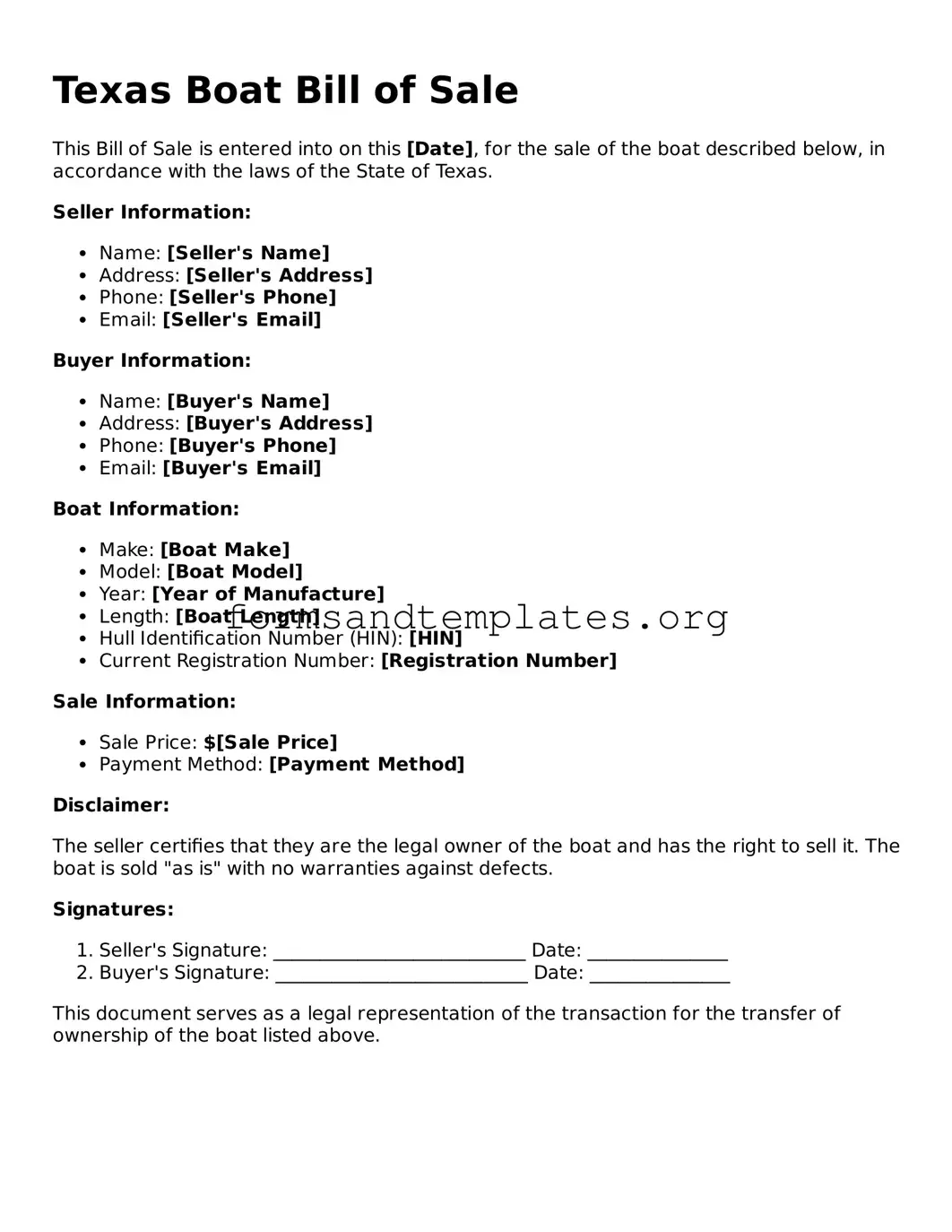What is a Texas Boat Bill of Sale?
A Texas Boat Bill of Sale is a legal document that records the transfer of ownership of a boat from one person to another. It includes important details about the boat, the seller, and the buyer. This document serves as proof of the transaction and is often required for registration purposes.
Why do I need a Boat Bill of Sale?
You need a Boat Bill of Sale for several reasons:
-
To legally document the sale of the boat.
-
To provide proof of ownership for the buyer.
-
To assist in the registration process with the Texas Parks and Wildlife Department.
-
To protect both the seller and buyer in case of disputes regarding the sale.
The Texas Boat Bill of Sale should include the following information:
-
Full names and addresses of the seller and buyer.
-
Description of the boat, including the make, model, year, and hull identification number (HIN).
-
Sale price of the boat.
-
Date of the sale.
-
Signatures of both the seller and buyer.
Is the Boat Bill of Sale required for all boat transactions in Texas?
While it is not legally required for every transaction, having a Boat Bill of Sale is highly recommended. It provides a clear record of the sale and protects both parties involved. Some buyers or lenders may require it for financing or registration purposes.
Can I create my own Boat Bill of Sale?
Yes, you can create your own Boat Bill of Sale. Just ensure that it includes all the necessary information mentioned earlier. Alternatively, you can use a template or form available online to ensure you meet all requirements.
Do I need to have the Bill of Sale notarized?
No, notarization is not required for a Texas Boat Bill of Sale. However, having it notarized can add an extra layer of authenticity and may be beneficial if any disputes arise in the future.
How do I register my boat after completing the Bill of Sale?
After completing the Bill of Sale, follow these steps to register your boat:
-
Gather the completed Boat Bill of Sale.
-
Obtain the previous registration certificate (if applicable).
-
Fill out the Texas Boat Registration Application.
-
Submit the application, along with the Bill of Sale and any required fees, to your local Texas Parks and Wildlife Department office.
What if I lose my Boat Bill of Sale?
If you lose your Boat Bill of Sale, you can create a new one with the same details, or you can ask the seller to provide a duplicate. It’s essential to keep a copy of the Bill of Sale for your records, as it serves as proof of ownership.
